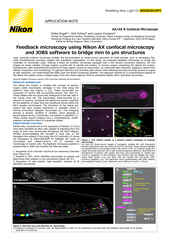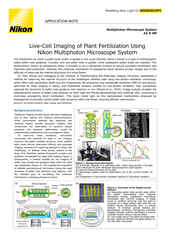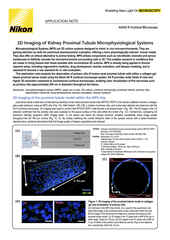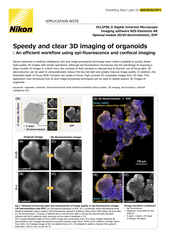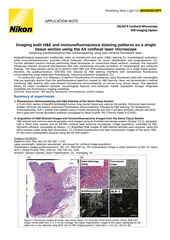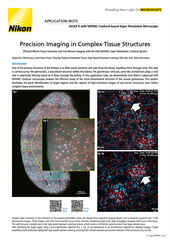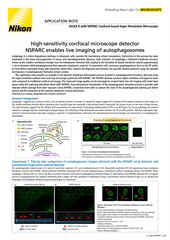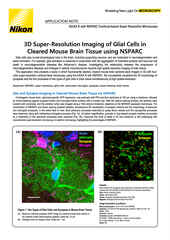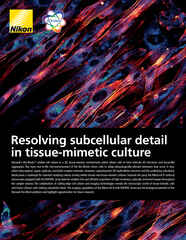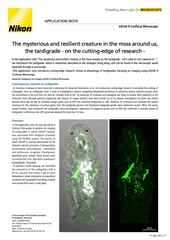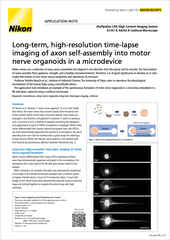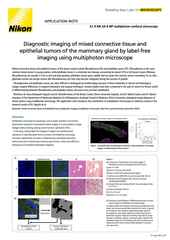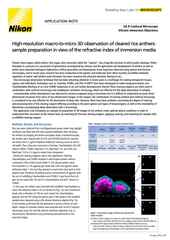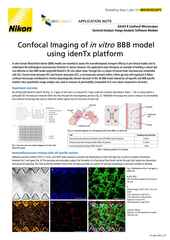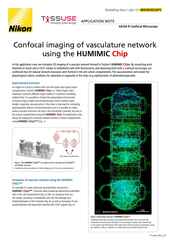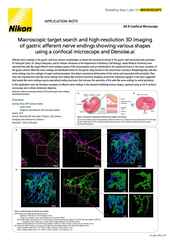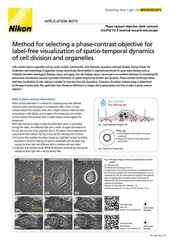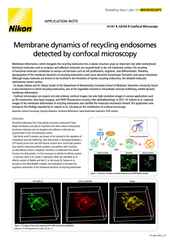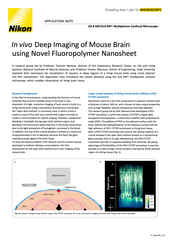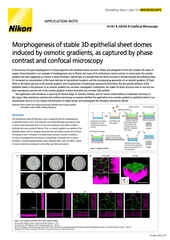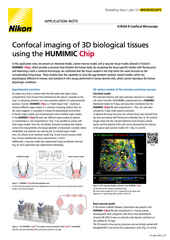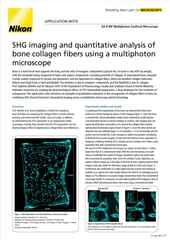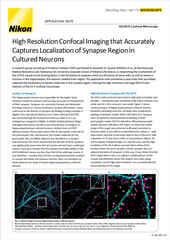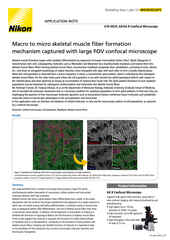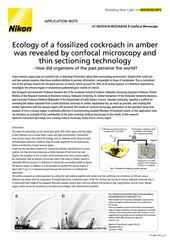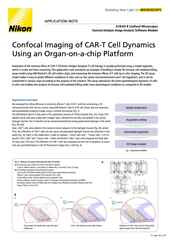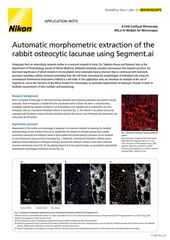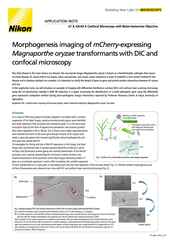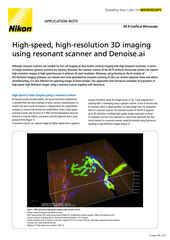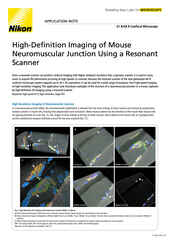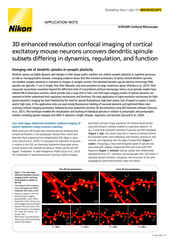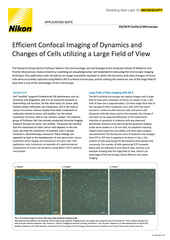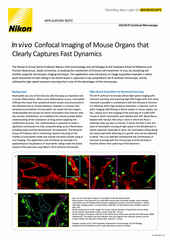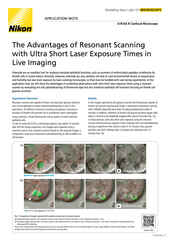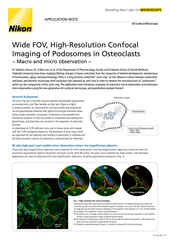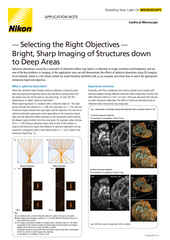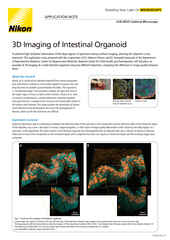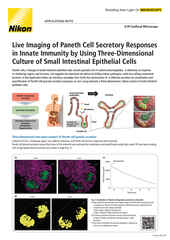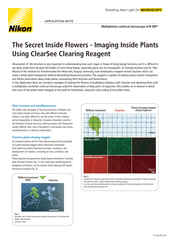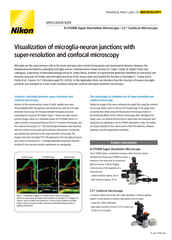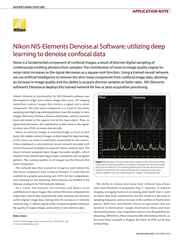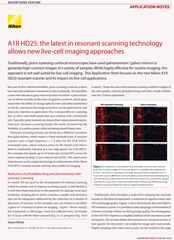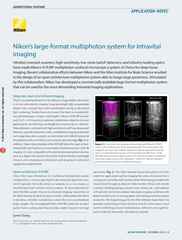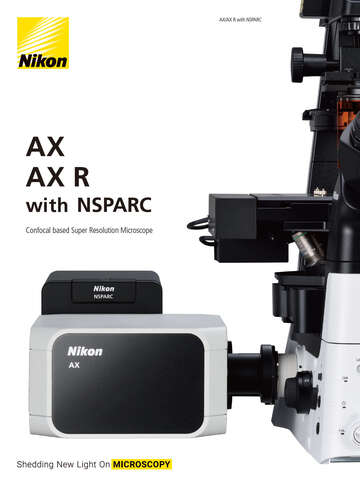- pt Change Region
- Global Site
Microscópios Confocais e Multifotônicos
Confocal microscopy provides optical sectioning, the ability to observe discrete planes in 3D samples, by using one or more apertures to block out-of-focus light. Nikon offers both point-scanning confocal instruments, led by our AX / AX R confocal system, as well as spinning disk (field scanning) confocal systems from top manufacturers.
Multiphoton microscopy is preferred for deep imaging applications in thick specimens, including intravital imaging. Non-linear excitation restricts fluorescence to the laser focus and near-infrared illumination minimizes absorption and scattering. Nikon offers the AX R MP multiphoton system, available with microscope stand options optimized for large specimens.
Image scanning microscopy (ISM) is a super-resolution technique that takes advantage of structured detection of each point in a point-scanning system to improve both resolution and signal-to-noise (S/N), a great choice for low light imaging. Both the AX / AX R confocal and AX R MP multiphoton systems may be equipped with the Nikon Spatial Array Confocal (NSPARC) detector for ISM imaging.
AX Series
AX/AX R
Widefield, super-resolution confocal laser scanning microscope
— the core of the AX series —
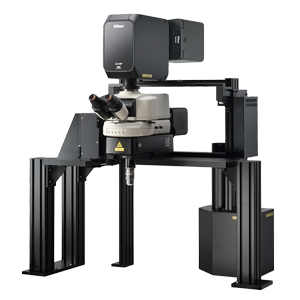
AX R MP with NSPARC
Achieves super-resolution and deep imaging while realizing low-noise images in deep observation via the NSPARC detector.
- Widefield
- High speed
- High resolution
- Deep imaging
- Long wavelength
- Analysis
- Minimally invasive
- Low phototoxicity
- In Vivo
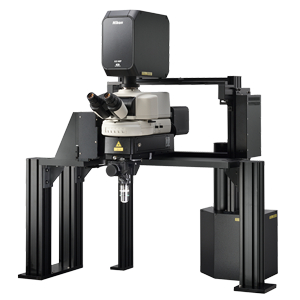
AX R MP
Provides a wide field of view and fast imaging that are ideal for clear visualization of deep microstructures.
- Widefield
- Long wavelength
- High speed
- Deep imaging
- Analysis
- Minimally invasive
- Low phototoxicity
- In Vivo
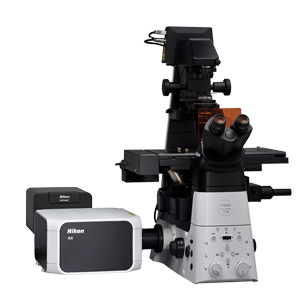
AX / AX R with NSPARC
Equipped with an NSPARC detector for super-resolution, achieving exceptionally low-noise and high-spatial-resolution imaging.
- Widefield
- High speed
- High resolution
- Analysis
- Minimally invasive
- Low phototoxicity
- Multicolor
AX NIR
Realizes high wavelength selectivity with near-infrared excitation, making it ideal for live-cell long-wavelength imaging.
- Widefield
- High speed
- Analysis
- Minimally invasive
- Low phototoxicity
- Multicolor+NIR
- In Vivo
Linha de produto
AX / AX R with NSPARC
O mais novo microscópio confocal da Nikon possui resolução, velocidade, sensibilidade e campo de visão inigualáveis, além de ferramentas baseadas em IA para simplificar a aquisição e análise.
AX R MP with NSPARC
Microscópios confocais multifóton recém-desenvolvidos, que visualizam claramente estruturas minúsculas no interior dos organismos vivos.
CSU Series
Os scanners de campo são renomados por sua baixa dosagem, características pouco danosa a espécimes, tornando-os ideais para aplicações de células vivas ou organismos.
Crest X-Light Series
O confocal de Disco Giratório é flexível e econômico para campos de visão (FOV) amplos (25 mm) e ideal para aquisição de imagens de células vivas e cortes de amostras grandes.




